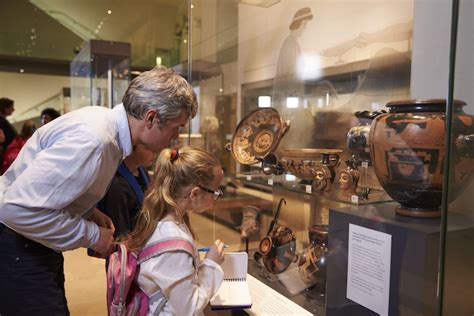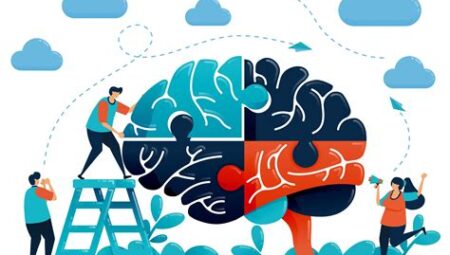Preserving Cultural Heritage: A Journey into Museum Curatorship
As the guardians of our past, museum curators play a crucial role in preserving and showcasing our rich cultural heritage. In this blog post, we will delve into the multifaceted world of museum curatorship, exploring the various responsibilities and challenges that come with the job. From acquiring artifacts and implementing conservation techniques to creating engaging educational programs and collaborating with indigenous communities, museum curators are at the forefront of cultural preservation.
We will discuss the ethical considerations involved in acquiring artifacts and the delicate balancing act of tradition and innovation in museum curation. Additionally, we will explore the importance of preserving intangible cultural heritage, such as oral traditions and rituals, as well as the advancements in digitizing cultural artifacts to enhance accessibility.
Join us on this enlightening journey as we unravel the intricate and captivating world of museum curatorship.
Table of Contents
Understanding the importance of cultural heritage
Cultural heritage plays a crucial role in shaping our identities and connecting us to our past. It encompasses tangible artifacts, such as historical buildings, artwork, and archaeological sites, as well as intangible elements like traditions, rituals, and language. Preserving cultural heritage is essential for maintaining a sense of continuity and belonging within society.
By understanding and valuing our cultural heritage, we are better able to appreciate the diversity and richness of human history. It allows us to learn from the experiences of past generations, gaining insights into their ways of life, beliefs, and artistic expressions. Moreover, cultural heritage serves as a source of inspiration, fostering creativity and innovation in various fields.
Furthermore, cultural heritage is often intertwined with economic development and tourism. Historical landmarks and traditional practices attract visitors from around the world, contributing to local economies and promoting cross-cultural exchange. Additionally, the conservation and restoration of cultural heritage sites create job opportunities and support sustainable development in communities.
Ultimately, the importance of preserving cultural heritage lies in its ability to foster a sense of unity and understanding among individuals and communities. It provides a platform for dialogue and mutual respect, transcending geographical and cultural boundaries. Recognizing the value of cultural heritage allows us to safeguard our shared human legacy for future generations to experience and learn from.
Roles and responsibilities of a museum curator
As a museum curator, managing the collection is one of the primary responsibilities. This involves acquiring, cataloging, and preserving artifacts in the museum’s collection. Curators must have a deep understanding of the historical and cultural significance of the objects in order to properly care for them and make informed decisions about acquisitions.
Another important aspect of the role is research and interpretation. Curators are responsible for conducting research on the artifacts in their collection to provide accurate historical context and interpretation for museum visitors. This may involve collaborating with scholars and experts in various fields to ensure the accuracy of the information presented.
Exhibition planning and design is also a key responsibility for museum curators. They are involved in creating engaging and informative exhibits that bring the history and culture to life for visitors. This includes designing the layout of the exhibit space, selecting artifacts for display, and creating informative and visually appealing exhibit labels.
Additionally, museum curators are often involved in educational programming. This may include developing and leading tours, workshops, and programs for visitors of all ages. Curators play a crucial role in making the museum and its collection accessible and engaging for the public.
Acquiring artifacts: Challenges and ethical considerations
When it comes to acquiring artifacts for a museum collection, there are a number of challenges and ethical considerations that must be taken into account. One of the primary challenges is the issue of provenance – ensuring that the artifact has a legitimate and documented history. This is particularly important in today’s globalized world, where the market for artifacts has become increasingly complex and sometimes fraught with illegal activity.
Another challenge in acquiring artifacts is the ethical consideration of ownership and cultural heritage. It is crucial to consider the impact that acquiring an artifact may have on the community or culture from which it originated. Many museums are now taking steps to repatriate artifacts to their countries of origin, in recognition of the ethical implications of holding onto objects that may have been taken without consent or through colonial exploitation.
Furthermore, there is the issue of financial resources and competition. Acquiring high-quality artifacts for a museum collection often requires a significant investment of money, and there is often competition from other museums, private collectors, and even black-market dealers. This can make the acquisition process challenging and potentially ethically murky.
In navigating these challenges and ethical considerations, museums must uphold the highest standards of transparency, accountability, and sensitivity to the cultural and historical significance of the artifacts they seek to acquire. Finding a balance between building a comprehensive and diverse collection and respecting the origins and ownership of artifacts is a complex but critical aspect of museum curation.
Conservation techniques: Protecting fragile artifacts
Conservation techniques play a crucial role in the preservation of fragile artifacts in museums and cultural institutions. The process involves careful assessment, documentation, and treatment of these objects to prevent deterioration and ensure their longevity.
One of the key conservation techniques is environmental monitoring and control. Museums need to maintain specific temperature and humidity levels to prevent damage to delicate artifacts. This requires the use of specialized equipment and regular monitoring to ensure optimal conditions for preservation.
Another important aspect of conservation is proper handling and storage of fragile artifacts. Museum staff receive training on how to safely handle and transport these objects to minimize the risk of damage. Additionally, storage facilities are designed to protect artifacts from light exposure, dust, and pests.
Conservation also involves the use of advanced technologies such as digital imaging and 3D scanning to create accurate replicas of fragile artifacts. These replicas can be used for research, educational purposes, and public display while the original objects are safely stored away.
Interpretation and exhibition design: Bringing history to life
Interpretation and exhibition design play a crucial role in making cultural artifacts and historical exhibits come alive for museum visitors. By carefully planning and crafting the presentation of artifacts, curators can effectively communicate the significance and stories behind each piece. Through interpretation, curators are able to provide context and meaning to the artifacts, allowing visitors to better understand and appreciate the historical significance of the objects on display.
Exhibition design is also essential in bringing history to life within the museum setting. With thoughtful layout and presentation, curators can create immersive and interactive experiences that engage visitors and transport them to different time periods and cultures. By using innovative display techniques, including multimedia, interactive elements, and sensory experiences, curators can create environments that captivate and educate museum-goers, allowing them to interact with history in a unique and memorable way.
Furthermore, effective interpretation and exhibition design can help bridge the gap between the past and present, making historical artifacts relevant and relatable to modern audiences. By carefully considering the ways in which historical narratives are presented, museums can ensure that their exhibits are not only informative, but also thought-provoking and impactful.
In conclusion, interpretation and exhibition design are key components in bringing history to life within museum settings. By strategically planning and crafting the presentation of artifacts, curators can create immersive and engaging experiences that captivate visitors and convey the significance of cultural heritage in a meaningful way.
Digitization of cultural artifacts: Enhancing accessibility
Digitization of cultural artifacts plays a crucial role in making heritage more accessible to a global audience. Through the process of digitization, museums and cultural institutions can preserve and share their collections with a wider audience, transcending the limitations of physical space. This form of digitization allows for remote access, enabling individuals from around the world to explore and learn about cultural artifacts that they may not have otherwise had the opportunity to experience.
Furthermore, the enhanced accessibility provided through digitization allows for individuals with disabilities to engage with cultural artifacts in a way that may not have been possible in person. Through the use of assistive technologies, such as screen readers and tactile tools, those with visual or physical impairments are able to explore and learn from cultural artifacts, thus ensuring that heritage is truly inclusive and accessible to all.
Additionally, the digitization of cultural artifacts opens up opportunities for innovative forms of interpretation and education. Through the use of interactive digital platforms, museums can present their collections in new and engaging ways, providing deeper insight and understanding for visitors. Whether through virtual reality experiences, 3D models, or multimedia presentations, digitization allows for a more immersive and dynamic exploration of cultural artifacts.
Overall, the enhanced accessibility made possible through digitization enables cultural institutions to fulfill their mission of preserving and sharing heritage with a diverse and global audience, creating meaningful and enriching experiences for all who engage with these invaluable artifacts.
Creating engaging educational programs for visitors
When it comes to creating engaging educational programs for visitors to a museum, it is important to consider the diverse needs and interests of the audience. One of the key aspects of designing educational programs is to ensure that they are interactive and hands-on, providing visitors with the opportunity to actively engage with the exhibits and artifacts on display. This not only enhances the overall visitor experience but also fosters a deeper understanding and appreciation of the cultural heritage being presented.
Furthermore, it is essential to consider the educational value of the programs, tailoring them to different age groups and levels of knowledge. For example, workshops, guided tours, and interactive sessions can be designed to accommodate both children and adults, offering age-appropriate content and activities to ensure that all visitors can benefit from the experience.
In addition, incorporating a variety of learning styles and methods is crucial for creating engaging educational programs. This can include multimedia presentations, storytelling, role-playing, and hands-on activities, catering to different preferences and abilities. By offering a diverse range of educational experiences, museums can effectively engage their visitors and make the learning process more enjoyable and impactful.
Overall, the creation of engaging educational programs for visitors is a dynamic and multifaceted process that requires careful consideration of the audience, the educational content, and the various methods of delivery. By incorporating interactive and hands-on experiences, tailoring content to different age groups, and embracing diverse learning styles, museums can successfully engage and educate their visitors, fostering a deeper appreciation for cultural heritage.
Preserving intangible cultural heritage: Oral traditions and rituals
Preserving intangible cultural heritage is just as important as safeguarding tangible artifacts in museums. While physical items such as traditional clothing, pottery, and carvings are significant, oral traditions and rituals hold an equally crucial place in a culture’s history and identity.
The passing down of stories, myths, songs, and rituals from one generation to the next provides a deep connection to the past and maintains a sense of community and belonging. However, these intangible cultural heritage practices are at risk of being lost over time, particularly as societies modernize and traditions fade into obscurity.
It is the responsibility of museums and cultural institutions to recognize the value of oral traditions and rituals and to take steps to preserve and promote these important aspects of human culture. This can be achieved through documentation, digital archiving, and community engagement, ensuring that future generations have access to the rich tapestry of intangible heritage that defines who we are as a people.
By actively working to preserve oral traditions and rituals, museums contribute to the global effort to safeguard the diversity and richness of human expression, promoting understanding and appreciation of the intangible aspects of cultural heritage.
Collaborations with indigenous communities
Collaborating with indigenous communities is of paramount importance in the field of cultural heritage preservation and museum curation. Indigenous communities hold invaluable knowledge about their history, traditions, and artifacts, making their involvement crucial in the interpretation and conservation of cultural heritage.
Working with indigenous communities requires mutual respect, trust, and understanding of their cultural values and practices. Museum curators and professionals must develop partnerships based on equitable collaboration rather than imposing their own agendas or interpretations onto the indigenous communities.
Collaborative projects with indigenous communities can include community-based curation, oral history collection, and co-designing exhibitions that accurately represent their cultural narratives. These partnerships not only promote the preservation of indigenous cultural heritage but also foster empowerment and inclusivity within the museum space.
By working closely with indigenous communities, museums can ensure that their voices are heard, their perspectives are respected, and their cultural heritage is preserved and celebrated in a sensitive and ethical manner.
Balancing tradition and innovation in museum curation
When it comes to museum curation, there is a constant tension between preserving tradition and embracing innovation. On the one hand, museums are responsible for safeguarding cultural heritage and maintaining a connection to the past. At the same time, they must find ways to engage with contemporary audiences and stay relevant in a rapidly changing world. This delicate balance between tradition and innovation is at the heart of museum curation.
One of the key challenges in balancing tradition and innovation in museum curation is finding new ways to interpret and display artifacts while still honoring their cultural significance. Curators must carefully consider how to present these artifacts in a way that respects their traditional context while also making them accessible and engaging for modern audiences. This requires a thoughtful approach to exhibition design and interpretation that manages to strike a balance between tradition and innovation.
Another aspect of museum curation where the tension between tradition and innovation is evident is in the acquisition of artifacts. While it’s important to preserve and showcase traditional artifacts, museums also need to acquire new pieces that reflect the cultural landscape of today. This means curators must carefully consider the ethical implications of acquiring new artifacts, while also ensuring that their collections are diverse and representative of contemporary culture.
Ultimately, the challenge of balancing tradition and innovation in museum curation requires curators to be thoughtful, creative, and open-minded. By finding ways to honor the past while embracing the present, museums can continue to fulfill their important role as preservers and interpreters of cultural heritage in a way that resonates with audiences both old and new.






